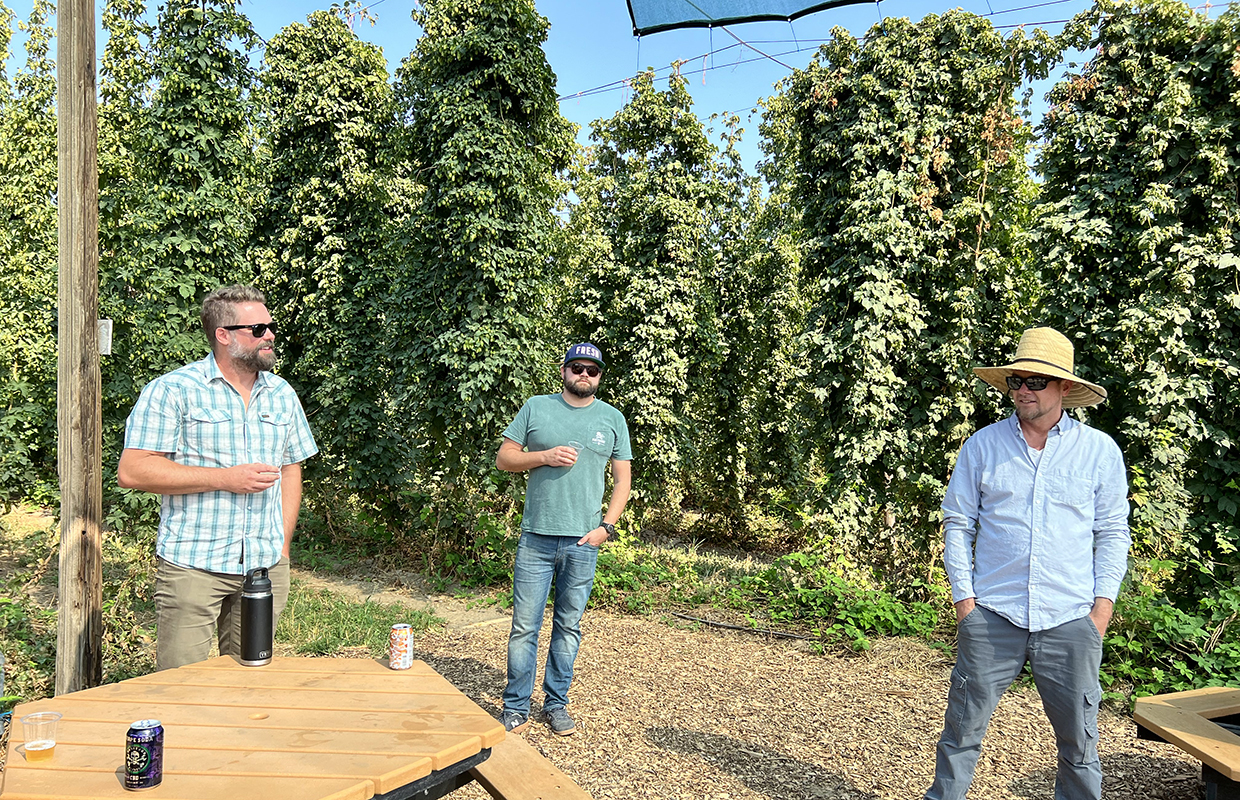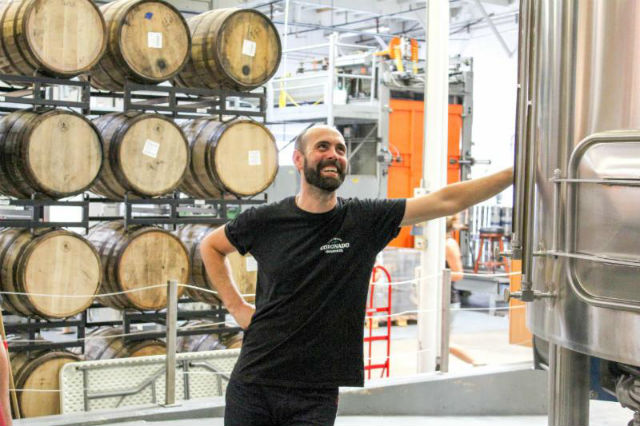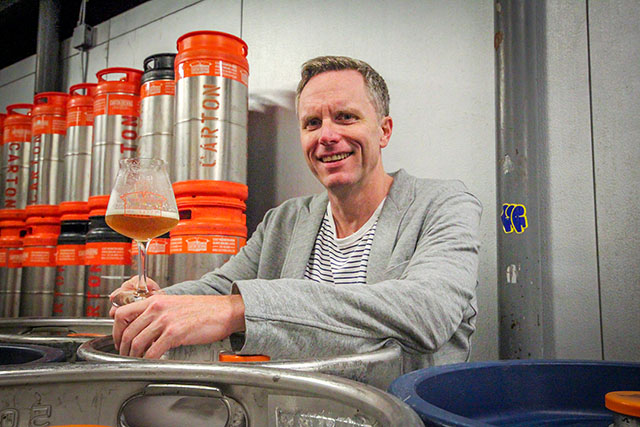
Whether you travel to the hop yards of the Yakima or Willamette Valley or not, making better beer comes from proper hop selection.
“It’s just like a chef going and selecting the food for the day,” points out Pinthouse Brewing Brewmaster Joe Mohrfeld. “The chef that goes to the market every morning and hand picks vegetables, the meat, or whatever ingredients that will make a better dish (is better) than the chef who is just ordering it and accepting whatever shows up at their front door.
“I truly believe that’s the same for brewing. Once you’re able to identify the hops that define the flavor profiles in your beer, and you can go out there, smell them, and select them, so that you know what you’re using for the next brewing year, your beer is going to get better for it.”
Being on-site and participating in hop picking can be an invaluable experience.
For Maui Brewing’s Kim Brisson-Lutz, it allows the VP of Operations and her team to have a first-hand understanding of the hops they use, from observing their appearance, aroma, and even the harvest conditions.
“This direct involvement can enhance our knowledge and appreciation of the hop’s characteristics, enabling us to make more informed decisions during the brewing process,” Brisson-Lutz said. “It also provides an experience for Maui Brewing teammates to see firsthand what goes into the beers we make. They see the importance of selected hops and the quality differences that the same variety can lend from fields miles away from each other. Touring the hop processing facilities and kilns provides an insight into what new techniques and experiments hop growers and suppliers are working on.”
Working From Home
Times have changed though and “bringing the hop fields to you” became more possible since the pandemic started in 2020 and the rise of the Zoom call.
Since 2020 Matthew Steinberg, a co-founder and Head Brewer for Exhibit ‘A’ said that they have reluctantly done selection in-house.
“Our hop vendors send us the lots they feel will work best for us based on our previous crop year choices,” he said. “The growers we work with tend to be very good at this and we have had very successful hop selections doing it this way.
“The big downside is we aren’t at the farms enjoying the on-site part of this.”
READ MORE: Watch for These Red Flags When Contracting for Hops
There are certainly some advantages to being on-site during the harvest but as all breweries learned the past few years, hop selection isn’t the most important part.
“Hop selection can be done from the brewery and still get the hops you are looking for,” said Jack’s Abby co-founder Jack Hendler. “The biggest challenges come from projecting specific hop varieties for each brand we brew. As brands grow or shrink it can be tough to know what volumes of hops to contract each year. That’s where strong relationships with your hop partners come into play. With the plethora of proprietary hop varieties, it may become necessary to have many partners.”
Trust the Numbers
The level of analytics and consistency evaluated by the suppliers is what COOP Ale Works Head Brewer Blake Jarolim says they rely on to get to where the Oklahoma brewery has gotten.
“We have had great success with ‘remote selections’ and still feeling like we get a good sense of the lots available to us,” Jarolim said. “Now that we are in a place to select, our level of experience still needs time before we would base lot selection purely on our sensory alone.”
Also, many hop providers are more willing to work with a brewery on a contract basis without the company needing to order thousands of pounds of hops at a time.
“Everybody’s kind of in a different scenario and everybody’s gonna have a different mix of beers,” Mohrfeld said. “Three of our four core beers are IPAs and they average around 5.5 pounds per barrel. So I know if I’m doing X amount of barrels, that it’s gonna be 5.5 pounds times that. It’s easy to break down how much I’m going to be using, just in raw numbers.
“I would contract those so that you can guarantee them and select them. A lot of brokers are, are moving their selection limits down a lot further. It used to be around 5,000 pounds, and I know that they’re working a lot with the smaller brewers and they’re contracting hundreds of pounds to be able to let them select. I would say if you know that you are using specific varieties in certain pounds, I would select those because you’re guaranteeing quality.”
Is the Spot Market Viable?
The spot market is helpful when you want to test drive a box of something new, added Neshaminy Creek Head Brewer Jason Ranck.
“Placing your orders for new hops on spot is good to do earlier in the year when more is available,” he pointed out. “Also, being a good customer and managing your hop contracts can really help out when you want a box of something rare.”
Spot buying is necessary and important, added Robert Wyngard, the VP of Operations for Modern Times and he includes it in the budgeting process.
“We prefer the approach of budgeting some extra funds for spot buys rather than try to perfectly predict exactly what will happen through the year,” Wyngard said. “Some brands hit, and some don’t and if you’re tied into a contract because of a hop bill for a brand that doesn’t hit, your now faced with the problem of what to do with those hops you’re contracted for.”
One of the things brewers forget about, he noted, is your cold storage space isn’t infinite.
“You can’t just look at contracts as a way of saving money, you have to approach it as the right tool for the right need,” Wyngard said. “Spot buying gives us the flexibility to add and remove beers from our brew planning and scheduling without being tied to the hops we’ve contracted for.
“I can plan on brewing a beer for a financial quarter, with a focus on contracted hops as the core of hot side additions and the bulk of dry hop, supplemented with that ‘something special’ spot buy, without sacrificing our storage our tying up cash in large quantities of hops. Sometimes buying less quantities at a slightly higher cost is the right decision.”




Be the first to comment